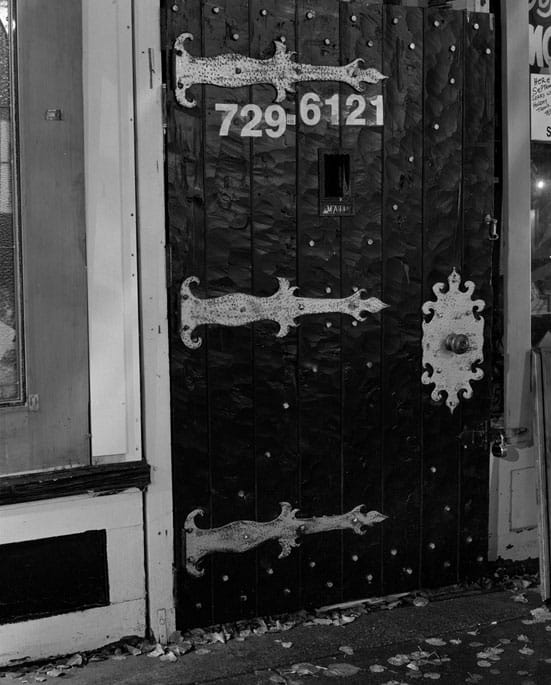27th November 2007 — 19th January 2008
Jeff
Wall's latest show of new photographs doesn't really seem like it. The
ubiquitous plundering of his distinctive style means that his own
potential progressions - his necessarily subtle paradigmatic shifts -
go un-detected, cast under the banner of his most prominent and
canonical works. The sense of newness around the work in this
exhibition (his first show of new works since 1994) is not immediately
apparent, but it is there, highlighted by some previously un-plumbed
concerns within Wall's practice.
On the ground floor there are three large-scale light-box mounted
photographs. Again, the proliferation of this display method coupled
with Wall's own pioneering use of what was originally a mode of
advertising, means that familiarity and a concomitant, habitualised
response are difficult reactions to overcome. However, all of these
photographs are wholly documentary - unstaged, unimpeded moments of
reality - that are nevertheless glazed and displayed in Wall's
customary veneer of theatrical artifice.
'Dressing Poultry' shows a group of women plucking and gutting poultry
in readiness for market, in a barn strewn with the detritus of American
blue-collar life: rusting bicycles, anachronistic bits of machinery,
tarpaulins; the signs of a disaffected, neglected America. This visual
(and cultural and social) underbelly of contemporary America has been
the staple subject for much of Wall's photography, and has provided the
perfect setting for his politicised brand of social allegory. Looking
at 'Dressing Poultry', there is the same meticulous preparation of the
set; the same baleful lighting; the same automaton poses; the same
theatrical 'tableau vivant'; the same vast light-boxes as his previous
fiction works. Except that this photo is not staged, lit, posed or
held; like the other light-box pieces in this exhibition, it is
documentary. Where once the complexity of Wall's work lay in his
complete manufacturing of a reality for the camera to photograph, here
he manufactures an un-reality within the camera: by affecting his own
'style'; by deliberately inaccurately plundering his own established
tropes, he can photograph the real world and achieve the same uncanny,
histrionic quality. Wall's awareness of his own notoriety has enabled
him to expand his trick: to extend the temporal space around a
photograph without actually doing so. It's a confidence trick based on
our complacency with his oeuvre, and it allows his work to bleed,
almost imperceptibly, into reality. In 'Church, Carolina St.,
Vancouver', a snow-shagged wooden church stands at the corner of a grey
suburban street. A hoarding in front tells us it's a Slavic church,
written in a Cyrillic script. This scene, so redolent of Wall-ian
theatrical devices, narratives and allegory is, in fact, reality
itself; framed and placed on the dais by a predominantly Wall-ian
history of contemporary art photography. It's as if his choices are
prescient of his execution, and pre-empt his need to recreate or fake.
Wall's control is insinuated rather than actualised, and as such is all
the more powerful for it.
In the basement there are six large black and white photos. As part of
a body of work from the last ten years or so, these images mix
documentary with staged conceit - couched in a homogeneous dim
monochrome. Wall talks about these photos as 'near documentary':
occupying a grey area between construct and accident, permanence and
instance. 'Men Waiting' depicts a group of labourers waiting, perhaps,
for a bus. This scenario, installed within Wall's idiom, is burnished
with a theatricality that implies political and social commitment, but
is undermined by the natural apathy and temporality of reality. This
insentience of nature, of the world, is most apparent in the diptych
'Rock Surface 1 & 2'. Both photographs are of the same patch of
rock, the second being a close-up of the first. The surface of the rock
is minutely, chaotically detailed, pock-marked by eternity, evocative
of a history outside of conceit and predating allegory. The second
photo, the close-up, reveals no more, yields no meaning and no
predetermined authorial message. It's a double take, and an implied
change between the first and the second photo compels a more
scrutinising look, only to reveal nothing but the photographer's own
insistence upon looking. It shows an arbitrariness of conceit,
reminding us that any notion of documentary will always be tinted with
fictive shades and contingencies. Wall reverses this potential ideology
by constructing his documentary on a base of contingency and fantasy.
His light-boxes, rooted in consumer fantasy, activate the 'truth' of
photography within a determinedly imaginary framework; similarly, the
black and grey photos evoke the tempering contingency of memory and
mental space, into which the document of the photograph is carefully
embedded. Wall's work may seem to expound the total control and
predetermination of the author, but these photos show that
predetermination is dependant on undetermined forces, so that, finally,
predetermination - staging, lighting, posing - becomes the
undetermined. Fiction becomes a documentary of contingency.
EA
White Cube - Mason's Yard
25-26 Mason's Yard
London SW1Y 6B
http://www.whitecube.com
Open
Tuesday-Saturday, 10am-6pm
